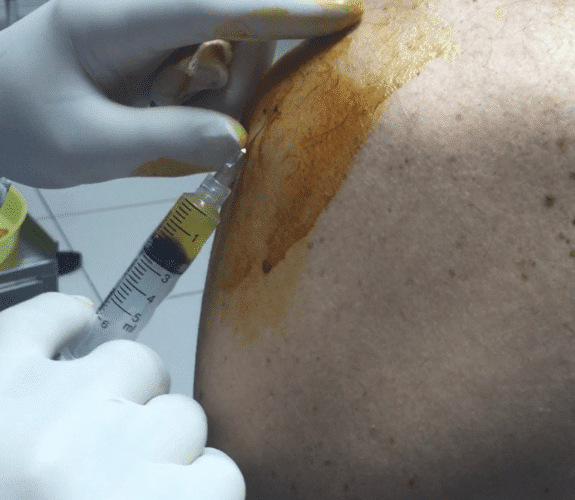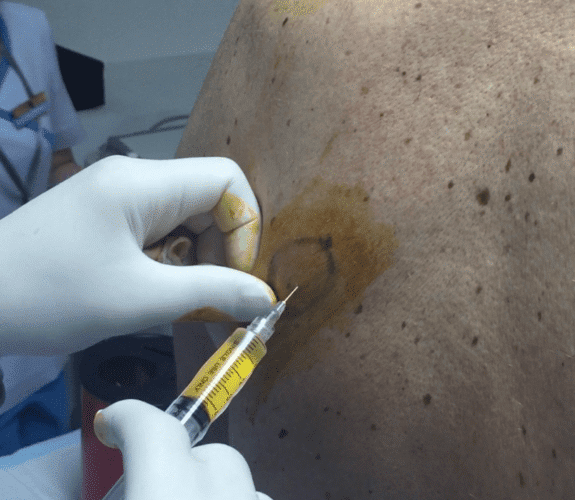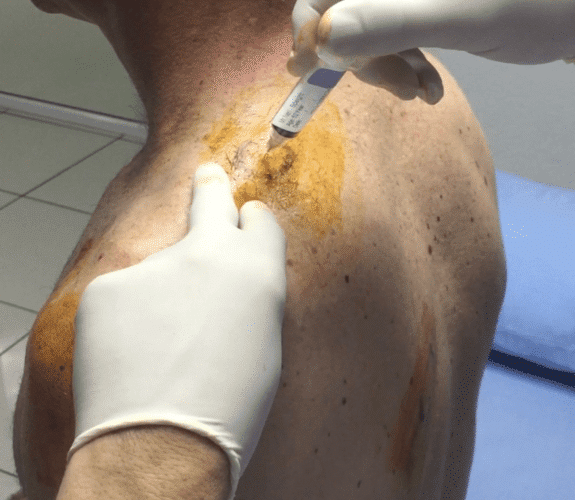Treatment options for shoulder injuries are few and many are concerned with surgery and long term implications of osteoarthritis. Our purpose is to help education people on the various regenerative options available to suffers of shoulder pain. There are options such as Platelet Rich Plasma, adipose stem cells and blood stem cells. These cell therapies are safe, clinically proven and come from the a patient.
Sometimes surgery is necessary, but these treatments can also be combined to accelerate healing, reduce scar tissue and improve range of motion.
Inflammation
Injuries produce inflammation that occurs where soft tissue, such as ligaments and tendons attaches to bone. Inflammation is simply the result of injury caused by mechanics or formation of bone spurs (osteophytes) or extra fluids in the knee. Swelling may be more pronounced after longer periods of inactivity.
Shoulder pain makes everyday activities quite difficult. It is a common orthopedic site for chronic tissue degeneration that results in moderate to severe pain. With shoulder pain one may experience stiffness, swelling and often may find it difficult even to flex the shoulder to perform tasks. Unfortunately, this is why one may eventually resort to traditional surgery. Surgeries typically involve partial or total knee replacements.
Bangkok Stem Cells offers various orthopedic regenerative therapies that use the body’s natural inflammatory process to reduce inflammation and the pain using non-surgical options that are safe and clinically proven to be effective for many patients. Sometimes shoulder surgery is a necessary option, but these therapies can also be used in conjunction to accelerate healing and lessen scaring.
SHOULDER TREATMENT WITH STEM CELLS
In the literature, it is commonly recognized and reported that shoulder injuries, including rotator cuff tears, tend to cure slowly and may be difficult to manage glenoid labral tears, sub acromial impingement, and degenerative, arthritic shoulder. Research on biological treatments for these conditions is therefore ongoing. This involves exploring the impact of different kinds of stem cells on healing when injected or used to increase arthroscopic or open surgery in the laboratory.
Stem cell therapy can provide an excellent alternative for patients seeking to avoid shoulder joint replacement surgery as well as many other shoulder pain surgical treatments. By choosing stem cell therapy, patients typically experience much faster recovery, far less post-operative pain, rapid return to the job, and reduced physical therapy need.
Stem cells are all human tissue’s fundamental construction blocks. Stem cells have potential as a therapy, partly because they can transmit useful tissue development and healing data to other body cells. Stem cells are obtained from a patient through needle usually from abdominal fat (adipose tissue) or bone marrow inside the hip and put in a centrifuge where the sample is quickly spun to isolate the stem cells and generate a wealthy concentration. These cells are injected back into the damaged joint of the patient in a matter of minutes to assist kick-start healing.
The process’s energy resides inside the cell. Stem cells are essentially the most basic raw material of the body, specialized cells with the ability to make copies of them, and the ability to differentiate specific functions within the body into different types of cells. While there are several distinct kinds of stem cells, those considered to be excellent in encouraging tendon, ligament, and cartilage healing are mesenchymal stem cells, multipotent stromal cells frequently discovered in the bone marrow and adipose (fat) cells.
The procedure of stem cell therapy for shoulder:
Stem cell therapy provides a minimally invasive alternative for treating shoulder injuries and the joint cartilage’s chronic wear and tear. Adult stem cells can be extracted from the adipose (fatty) tissue and bone marrow of a patient, separated, consolidated, and prepared to be injected into the damaged shoulder areas. Under image guidance, the injections are performed to ensure that the cells are accurately placed in the specific damage areas.
Recovery after Stem Cell Process:
Recovery time is dramatically shorter than most surgical recoveries following a stem cell procedure for shoulder pain. Most patients can return to job within 1-2 days after their operation and return to regular daily exercise. Most patients do not involve physical therapy after surgery. The right time to return to sporting operations relies on the severity and particular injury being treated, but it usually takes 4-12 weeks. For many shoulder wounds, stem cell therapy can be a great option to shoulder substitute surgery.
Quantity of stem cell injections:
A single stem cell injection is all necessary for most patients to eliminate their shoulder pain, and the pain relief can last for the rest of their lives. Additional stem cell injections will be needed in instances where the shoulder has received serious harm.
Results:
The results of the stem cell injection of the shoulder at first will not be noticeable as it will take time for the stem cells to heal the shoulder naturally. Typically, in about three weeks, patients will start to see an injection reaction. Most patients will subsequently experience pain reduction. Over the next few months, shoulder pain will continue to decline dramatically as stem cells continue to cure the shoulder. Within a short time, most patients will recover their shoulder’s complete mobility without any pain.
Stem cell injections are a safe alternative to surgery for pain in the shoulder. Since adult stem cells and rich plasma platelet (PRP) from the body of the patient are used, there are virtually no risks to the health of the patient.





